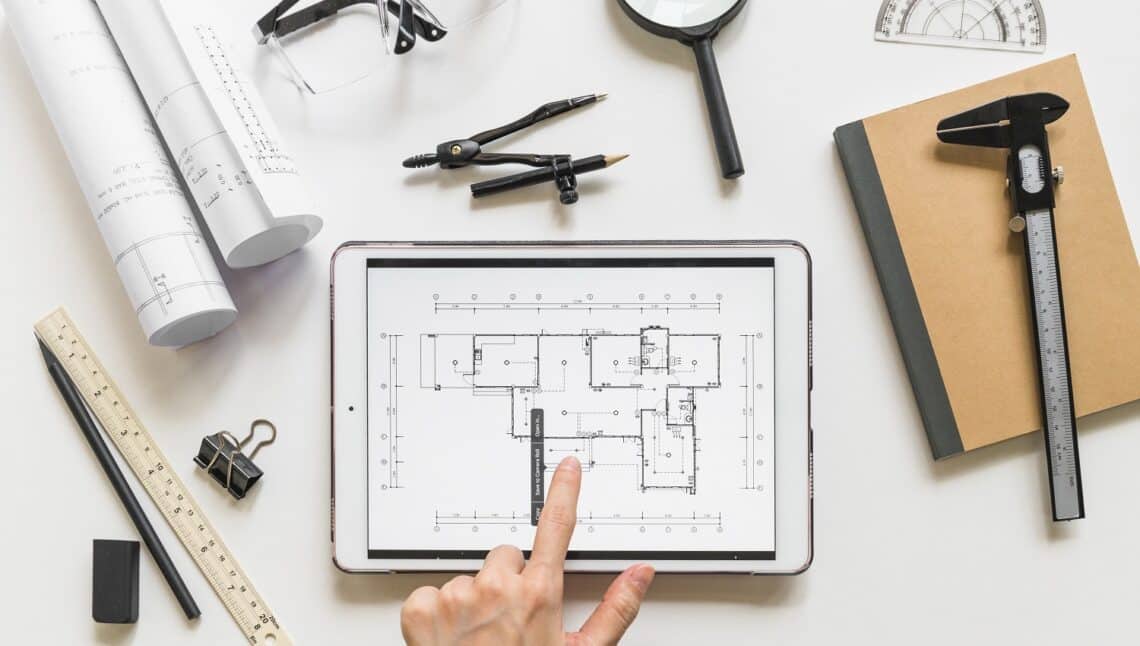The spread and subsequent lockdowns due to COVID-19 have drastically changed how we work and forced professionals worldwide to shift to work from home.
Undoubtedly, the current scenario has also impacted the lives of architects and design professionals. While millions of employees continue to work from their ‘home offices,’ it is still a challenge to deliver projects that involve a whole team, coordinating through remote communication.
However, we recently spoke to a few experts in the field, and they recommend the following ways to adapt to the new normal.
Work Smarter

Many companies have experimented with the ‘home office’ routine earlier, and while it may have shortcomings, there are several ways you can streamline work. While working remotely, it’s essential to have fast internet connectivity and technologically advanced systems. The latter is especially important for architects as they rely on cloud storage and SaaS (software as a service) solutions to increase productivity.
Therefore, it only makes sense to beef up internet speed and use smartphones and laptops that can handle multiple software and apps. Besides, even though you’re not physically in touch with your team, experts recommend using a common text-based and file-sharing platform to keep everyone in the loop.
Virtual Tours
Visiting construction sites in person is no longer possible since most areas are shut down and inaccessible due to the fear of the virus spreading. However, many companies have come up with unique virtual tour programs wherein clients and other stakeholders can look at a property with the help of digital tools.
Professionals are now using GoPro cameras to record and broadcast images to the rest of the team while also enabling clients to view the work-in-progress status. This approach may not provide the complete picture, but it sure is a smart and effective way to get work done.
Digital Approach
Ideally, the entire construction industry (architects, construction companies, material manufacturers, and suppliers) should adopt a digital approach to stay afloat in the market. Obviously, we cannot expect a paradigm shift overnight. Still, more and more individuals are using technologies like BIM, 3D printing, drones, and sensors on-site to upgrade their remote work scenarios.
Some designers are also using digital sketchbooks to replicate their concepts on a virtual interface. With the help of certain design software, you can transfer the entire creative process online and allow your team members to collaborate, edit, and work on different projects simultaneously.
However, the transition in this sector has been a slow one, and several companies are yet to jump on the digital bandwagon. Therefore, it’s crucial for businesses to rapidly change their modus operandi and accept ways that are technologically progressive and more appealing to the clients in the present situation.
Balancing Act
The world is undergoing a crisis, and you’re definitely not alone in this. While it may seem nerve-racking to cope with the latest technological developments happening regularly, you should not try to acquire new skills at the drop of a hat.
Ideally, you should divide your schedule in a way so you can get all the work done and still have time to learn something new without disrupting the work-life balance. It’s easier said than done, but since you’ll be saving a lot of time, which was otherwise spent on commute and breaks, you’ll mostly complete all work earlier than usual.
The extra time can then be used for exploring different software and looking up tutorials online. However, you must not work longer than usual or make a habit of working beyond office hours.
That being said, you should create a dedicated workstation at your home and take fewer breaks, so you never miss any deadlines. Also, mitigate distractions while working, so you don’t lose concentration and make mistakes.

Final Words
The present circumstances have largely affected communications and disrupted business activities that require physical presence.
Architecture is not an industry that saw much of remote working before this pandemic, with only six out of ten architects having prior work-from-home experience. Nevertheless, architects around the world have risen to the challenge and devised their own strategies to thrive in a highly competitive market.
In fact, several companies have pointed out the upsurge in their website traffic and taken it as a golden opportunity to increase their client base. Likewise, we also suggest looking at the positive side of things so you can continue innovating in the comfort of your home.
Till next time, keep hustling!
Related Articles
What Is The Purpose Of An Architecture Portfolio?
19 Best Urbanism, Design, and Architecture Podcasts to Follow
The Best Architecture Portfolio Examples, Covers, Designs | Architecture Lab
How Can Architects Promote Themselves?
Tips on How to Get an Architecture Job From a Post Online
What Skills Are Required to be an Architect?
Learn How To Ace Your Architecture Phone Interview
What Are Zaha Hadid Architects, Snøhetta, Perkins+Will, BDP & Callison Looking For
Learn How To Become An Architect
Architecture And The Culture Of Long Hours
Is Being An Architect Worth It?
Learn How To Get An Architecture Internship


